Now & New
Twilight At the Museum of Art: Impressionist Artworks Come to Life
When it comes to leisure and travel anywhere in the world, one of the mainstays of any city looking to attract tourists is the museum, usually divided into categories of art and science. Hiroshima City may have a couple of science-y exhibits mostly aimed at young children, but when it comes to the best museums, those institutions focus on artworks of historical significance. I myself have a penchant for spending the entire day at one or two museums given how much time I spend scrutinizing each and every item on display, but alas, a museum’s greatest weakness is almost always its business hours.
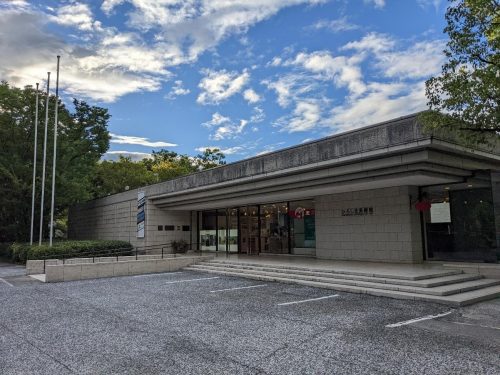
The bulk of museums I have visited in my lifetime all over the world tend to close at five or six o’ clock in the afternoon, well timed with the sunset or closing hours of a regular office. Closing at that time is perfectly understandable considering how the employees and locals who visit tend to wish to go home at that time, but that still leaves the question of what tourists can do at night besides eat dinner and sleep. Guests who are old enough can hit up a bar or izakaya, but our younger visitors may be wanting for more nightlife options. Luckily, the Hiroshima Museum of Art has an answer for that dilemma on select days this summer: the Night Museum Tour.
Meet the Impressionists
The Hiroshima Museum of Art is by no means the only institution conducting these nocturnal gallery tours, but it is certainly the most famous site to do so. Dubbed “HIROSHIMA NIGHT MUSEUM,” this special after-hours program—available in Impressionism and Nihonga (Japanese-style painting) versions—commenced last year, and is back by popular demand for the summer and autumn of 2022! The Impressionist showings happen first in the months of June, July, and August, followed by the Nihonga showings from September to early December. The announcement was made in mid-June and tickets sell out fast; I couldn’t snag myself a spot in 2021, so as soon as I received word about it this year and sales began, I pounced on the event being held on July 22nd, paid online, and simply showed the confirmation on my smartphone to the museum receptionist on the day of the tour.
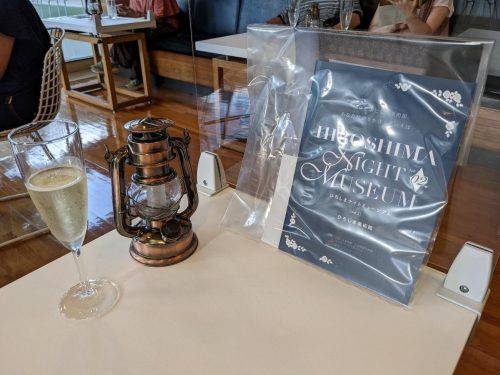
After the receptionist confirmed my ticket and name, she directed me to the café, where everyone else was already waiting, and where I would claim my complimentary drink. The choices on tap included sparkling wine as well as virgin alternatives like oolong tea and orange juice for kids, drivers, Muslims, and anyone else who couldn’t have alcohol that night. In addition, all guests were handed a lantern to light up the pitch-black halls of the museum as well as a pamphlet detailing the key Impressionist artists we would learn about tonight, as well as select paintings and sculptures by said artists that would be explained further. The six Impressionists and Post-Impressionists that would star in the show were (in order of appearance): Vincent van Gogh, Berthe Morisot (in passing by van Gogh and Manet), Édouard Manet, Claude Monet, Paul Cézanne, and Pierre-Auguste Renoir. We were urged to read up on the six artists, their principal works, and relationships with each other before the tour started.
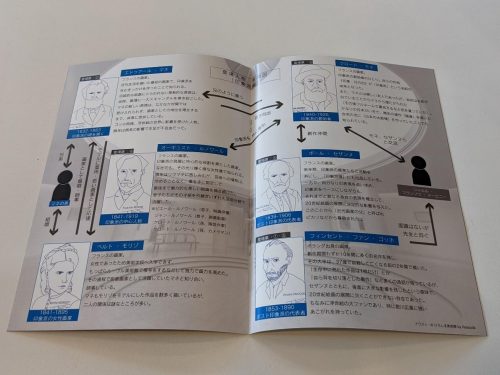
As can be seen from the two pages above, information in English or French is sorely lacking (especially considering Impressionism had its roots in France), but not to fear, for the masterpieces inside would speak for themselves, and the people in costume would be entertainment in and of themselves. I tend to drink wine slowly, and as the clock was fast approaching 6:30 p.m., I had to take bigger gulps and rush out into the courtyard with all my stuff in hand to join the rest of the group. There are lockers available in the courtyard to store customers’ belongings for a fee, but I instead opted to save my money and lug my bags and lantern with me the entire time. Before long, a man dressed as Vincent van Gogh stepped out of the museum building, asking us if we had seen a black cat, the one that’s missing from his painting, Le Jardin du Daubigny (Daubigny’s Garden). This is because there’s a similar painting in Basel, Switzerland, that has the cat, but Hiroshima’s version of the painting lacks the feisty feline.
Act One
“Kitty? Kitty! Has anyone here seen a cat? It goes, ‘meow.’ It’s about this big, and black.”
I and the rest of the group looked back at him in silence and bewilderment, unsure of how to answer, until he continued with questions of his own.
“Hm, who are you? You don’t look like Frenchmen, and you certainly aren’t a Dutchman like myself. Could you all be…Nipponjin (日本人 – Japanese people)? I heard about you folks, and have had quite an interest in Japan too. Anyway, what is with your outfits? Are you poor? Well, no matter. Come with me, poor Nipponjin, and allow me to show you the beauty of fine arts as we look for my cat!”

Mr. van Gogh prompted us to turn on our lanterns, then led us into the main hall, where the only lights shining were the emergency exit indicators, and if not for the lanterns we held, I probably wouldn’t even have seen my hand in front of my face. He took us into one of the four halls, where artworks to be covered tonight were illuminated with auxiliary lamps. This particular chamber was full of Impressionist paintings, but the first one we would check out was a portrait of Berthe Morisot, herself an Impressionist painter and the wife of Édouard Manet’s younger brother. Mr. van Gogh was halfway through explaining the picture of Ms. Morisot when he decided that task was best left to the original artist of the painting, none other than Édouard Manet himself!

The old man was more than happy to explain his inspiration behind the painting as well as the most noteworthy points. Ms. Morisot’s dark outfit contrasts greatly with the pale blue sky and the rose-colored shoe she exposes from underneath her dress. Following that spiel, Mr. Manet moved onto talking about his relations with the other Impressionists, at which point he mentioned Claude Monet, who is often confused with Édouard Manet in terms of name and works. Monet was especially known for utilizing the concept of light in his paintings to captivate the audience, and even in modern times, his paintings are eerily realistic, like color photography before it was invented!

To up the ante, it was now Manet’s turn to summon another historical figure: Claude Monet, in the flesh! The man cosplaying as Monet had a beard smaller than what I normally see in pictures of Monet, but I take it this cosplay is just a younger version. As anticipated, Claude Monet was ever frustrated with spectators mistaking his paintings for Manet’s, so at some point, he started signing his name at the bottom of every picture, “Claude Monet,” so that there would be no misunderstandings. Ironically, in modern times, people tend to recognize Monet more often than Manet (at least, I do) and even mistake the latter’s paintings for the former’s paintings, so perhaps it was Monet who got the last laugh.

Monet went on to talk about how much of an influence Impressionism made in the world of art history, specifically the impact on modern art. He talked about working with his Impressionist associates, many of whom were equally famous, such as Paul Cézanne, quoted by Pablo Picasso as “the father of us all.” The man posing as Monet tonight scoffed at the quip, seeming to think that “Father of Modern Painters” was a hyperbole for an artist like Paul Cézanne, when lo and behold, who would be eavesdropping by the chamber entrance than Mr. Cézanne himself!
“Oh, hey Paul. I wasn’t badmouthing you! Were you here this whole time? I’m sorry for gossiping about you. Wait, come back!”
An irate Paul Cézanne disappeared into the shadows of the closed museum before any of us had time to figure out what was going on.
“Everyone, wait right here. I’ll go and fetch him. If I don’t come back immediately, start shouting. There’s a chance a fight could break out. Au revoir!”
Everyone in the room waited anxiously on Monet, and though he had been gone for a good while, none of us had the audacity to cause a racket inside the museum. Mr. Cézanne eventually showed up, but without Monet. Did that fight actually happen? The world may never know.

Next on the agenda was L’Arbre tordu (The Bent Tree). Why a bent tree, when there were a handful of straight trees he could’ve painted instead? The most appealing point of this piece, he clarified, was that the bent tree—and every bit of scenery surrounding it—looks different to everyone who views it depending on the angle at which the scene is viewed. In other words, it isn’t just one picture; move about the room, and it’s as many pictures as you want it to be! That is what Cézanne went for in his paintings; everyone sees them a different way and develops a different impression of them, hence the Impressionism.
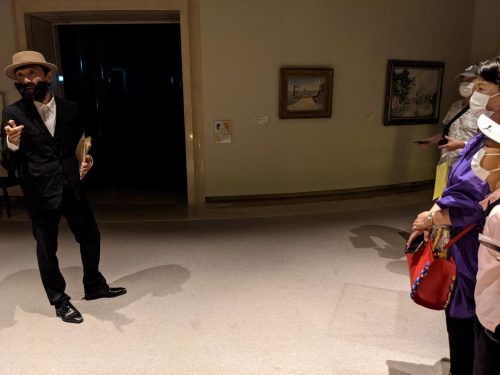
At this point, Cézanne proceeded to demonstrate how to paint a portrait of a person by picking a random person from the audience. When a model poses for a painter, it is vital to be statue-like and not move a muscle so as not to distract the artist and ruin the consistency of the painting. The woman he chose to be his example model couldn’t hold her giggles in, much to the dismay of Cézanne, but if anything, this served as a valuable lesson in how patient models of the time had to be. These days, even posing for an instantaneous photograph is a bit of a task for most folks, so the invention of the camera around these artists’ time is indeed something for which to be thankful.
Act Two
When Cézanne disappeared into the darkness again to find the other artists, the museum lights came on to signal the intermission. Visitors were free to walk about the museum and check out the artworks in any of the halls, which was my chance to take better pictures of the paintings that were covered earlier. It was a special moment for everyone who bought tickets for tonight’s event, as if the museum was rented out just for us. Soon enough, the lights went out again and a familiar character with an immediately recognizable punchline emerged from the darkness.
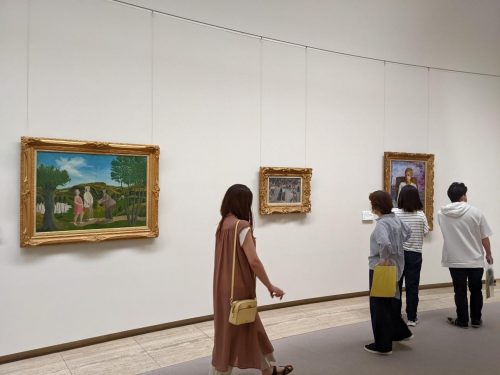
“Kitty? Kitty! Did anyone here see the cat?”
You guessed right; Vincent van Gogh was back for a second round of explaining artworks. Before that, though, he took a good long look at us, doubting that we were the same group of tourists he met outside the museum.
“Wait a minute. Are you the same Nipponjin I was talking to earlier? You don’t look as poor as you did before. Could it be that after taking in true beauty from looking at all this art, your appearance has changed as a result? Well, no matter. Come with me, well-off Nipponjin, and let us peruse more Impressionist masterpieces as we continue to look for my cat!”
For starters, van Gogh touched up on a painting of The Judgment of Paris by Auguste Renoir, in which Paris presents a golden apple to the goddess he deemed the most beautiful. Renoir depicted the three deities completely nude as Paris presented the golden apple to Aphrodite, who promised him Helen, thereby starting the Trojan War. It was also at this time that, you guessed it, Renoir himself showed up to elaborate further.
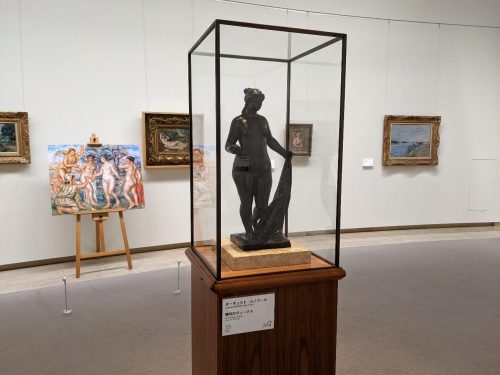
All the artists who took the stage tonight had beards, but Renoir’s was the biggest of them all. In addition, the actor who played Renoir also had a paintbrush bound to his right hand with bandages, a reflection of the rheumatoid arthritis the actual man developed in the autumn of his years. Mr. Renoir stated that he was highly intrigued by the female figure, leading to him producing paintings and sculptures of naked ladies, especially of the goddess Venus (Aphrodite), a popular subject for centuries. The works of Renoir would go on to inspire subsequent modern artists who had a penchant for nude figures, such as Aristide Maillol, who sculpted the gigantic Venus standing watch in the museum’s central atrium.
Moment of Joy: Seeing the Invisible
The five characters tonight talked a lot about their own and each other’s pieces, but never did it come off as a lecture, but rather, a group interaction centered around how we felt about the art we saw. Despite never seeing a cat on the museum grounds, when we looked at the dark green blotch in Le Jardin du Daubigny where the black cat was supposed to be, we started to see the cat for ourselves within the painting, after which point, we were asked what the cat was doing in the picture.
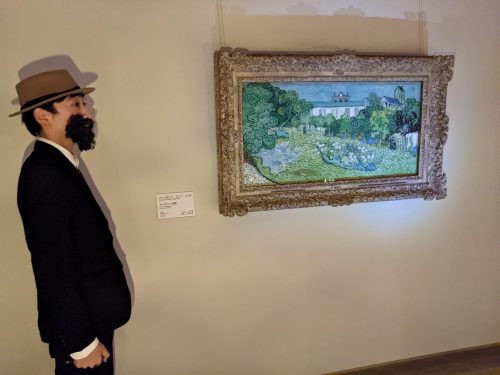
When I was asked, I stretched out my arms and leg to indicate that the cat was sprawled out in a relaxed position, and when the character asked a little boy, he replied that the cat was leaping in midair. I felt kind of silly with my reaction, as if I was a giddy child on a school field trip to the museum, but in my defense, they gave me wine before the tour so I felt no embarrassment whatsoever.
After the After Hours
After the explanations of Renoir’s work, the night museum tour came to a close.
“Thank you all for attending this tour of Impressionist artwork. I can tell that the fine arts have enriched you greatly, and you have become better people for it. Now, go forth into the world, wealthy Nipponjin, and spread the beauty of art wherever you go. Do be careful on your way home, and may we meet again someday. Tot ziens!”
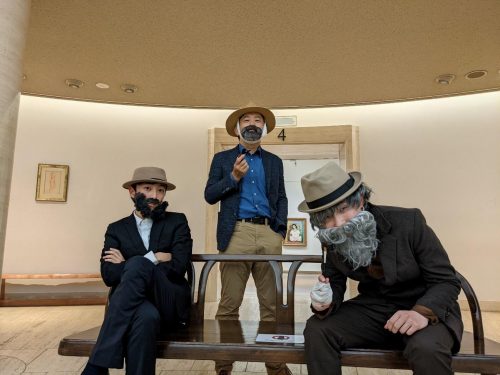
The tour ended at about 7:40 p.m., leaving guests with 20 minutes to walk around the museum and view any artworks they wanted until the true closing at eight o’ clock. Meanwhile, Vincent van Gogh, Paul Cézanne, and Auguste Renoir stuck around, posing for group photos with any visitor who so desired one. I took my fair share of photos of and with them, then wandered about the four halls to marvel at the old masters’ craftsmanship until closing time. On the way out, guests were offered a commemorative postcard featuring one of the works inside the Hiroshima Museum of Art. There were several good choices, but I went for the only one that made sense on account of tonight: Le Jardin du Daubigny.
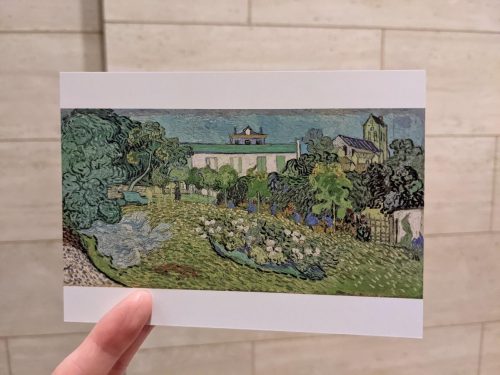
At 7:59 p.m. the sky wasn’t yet completely dark, rendering the lanterns not so useful outdoors, but walking about the courtyard with one in hand was still amusing for its own sake. Alas, the museum had to close up shop, so I swiftly returned to the gift shop to return the lantern before saddling up for home. Tourists to Hiroshima with kids who attend this museum tour will be relieved to know that the night is still young, and that their adventure downtown can continue at a restaurant, karaoke parlor, bowling alley, or even Peace Memorial Park.

Ah, yes, the museum, ever vivid at night as it is during the day. One can learn from and enjoy it enough on one’s own, but add in an immersive, entertaining tour of the facility and it can be the pièce de résistance of a visit to any city center. I realize that an art gallery may only appeal to a fraction of those who visit Japan, but anyone who has any interest in art at all or is accompanied by artsy-fartsy children definitely will not regret stopping by the Hiroshima Museum of Art for the day or for the night. Seeing the paintings alongside the original artists themselves provides that je ne sais quoi that allows spectators to live with the art and artists, an impression not soon to be forgotten.
Written by the Joy in Hiroshima Team
